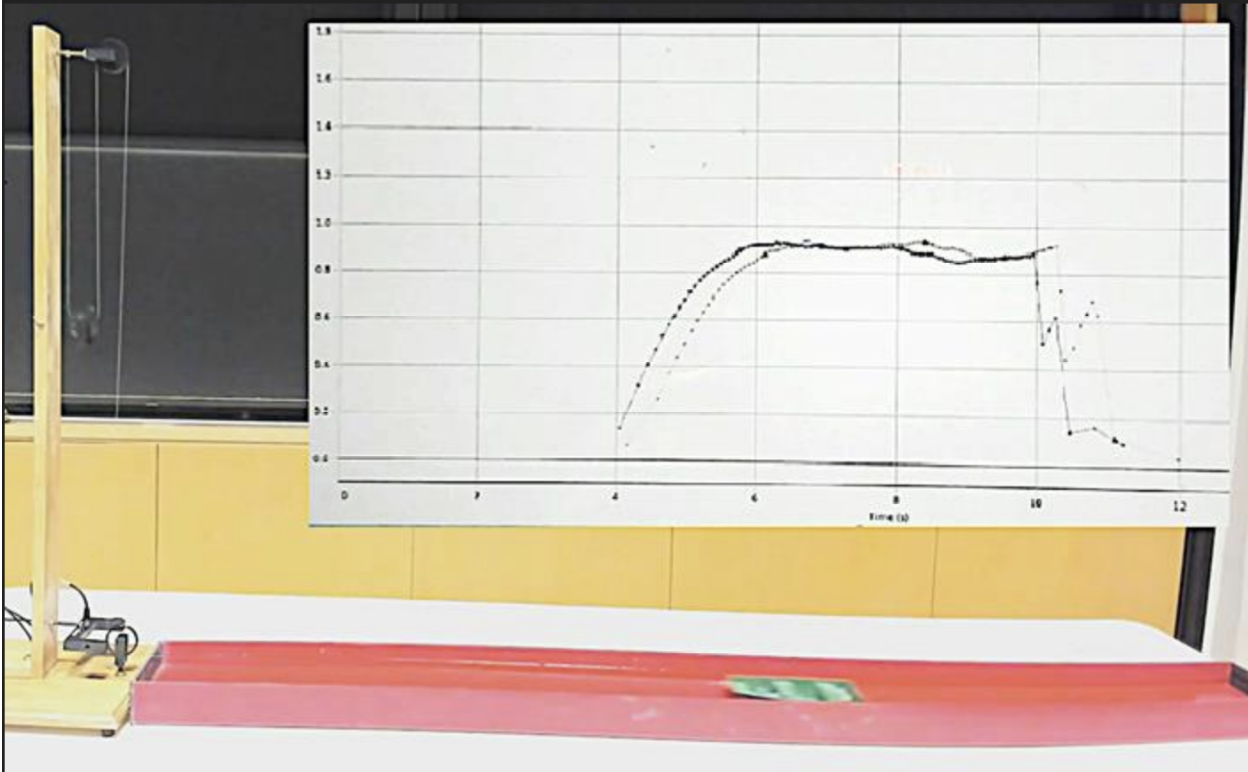CEE 102 Midterm Exam Images
1/37
There's no tags or description
Looks like no tags are added yet.
Name | Mastery | Learn | Test | Matching | Spaced |
|---|
No study sessions yet.
38 Terms
Pontcysylite Aqueduct
1805
Thomas Telford
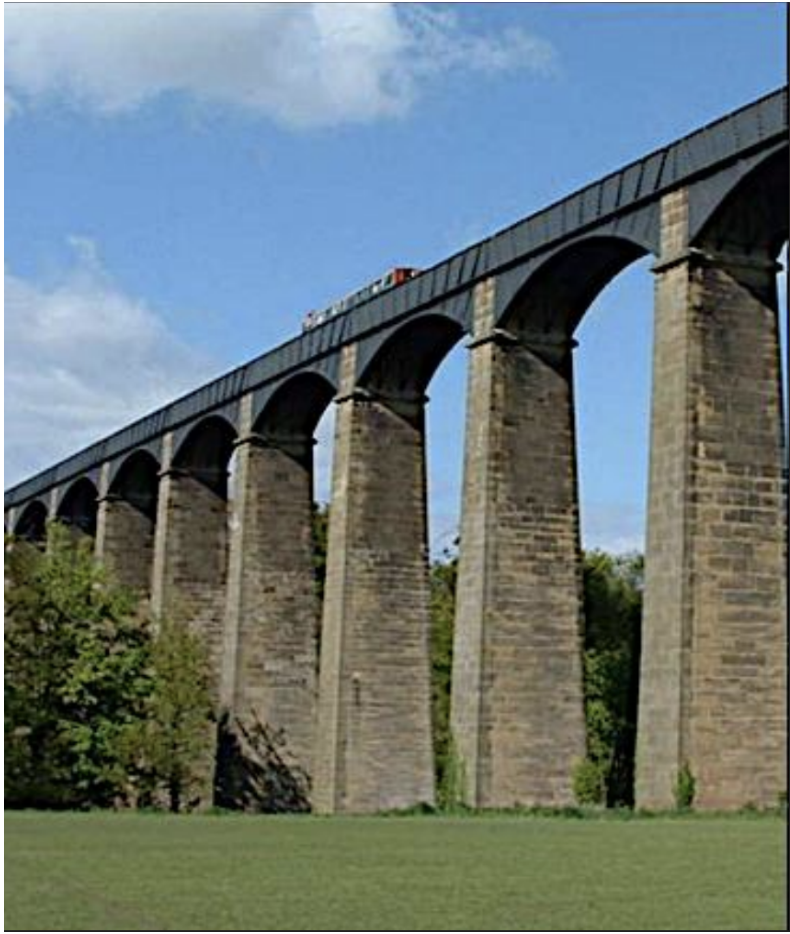
The Iron Bridge
1779
Built by Abraham Darby III
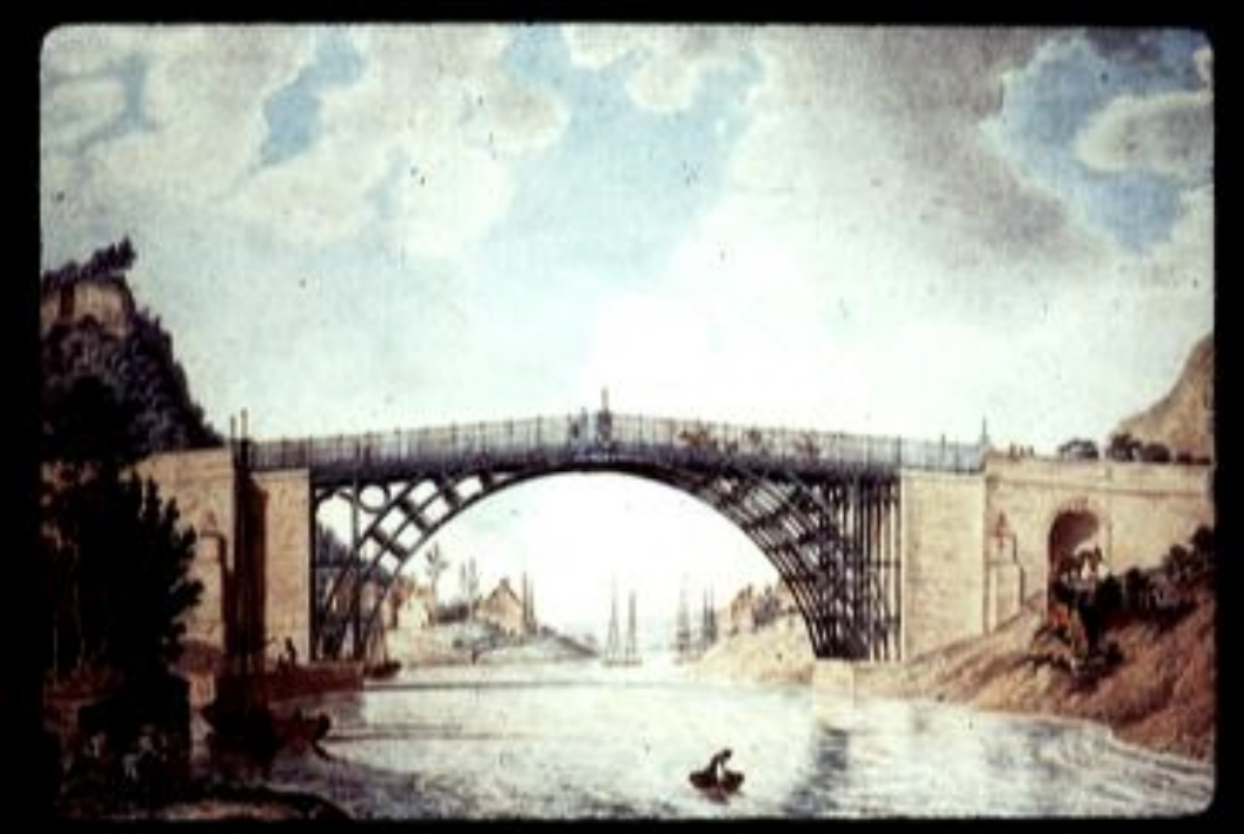
Craigellachie Bridge
1814
Thomas Telford
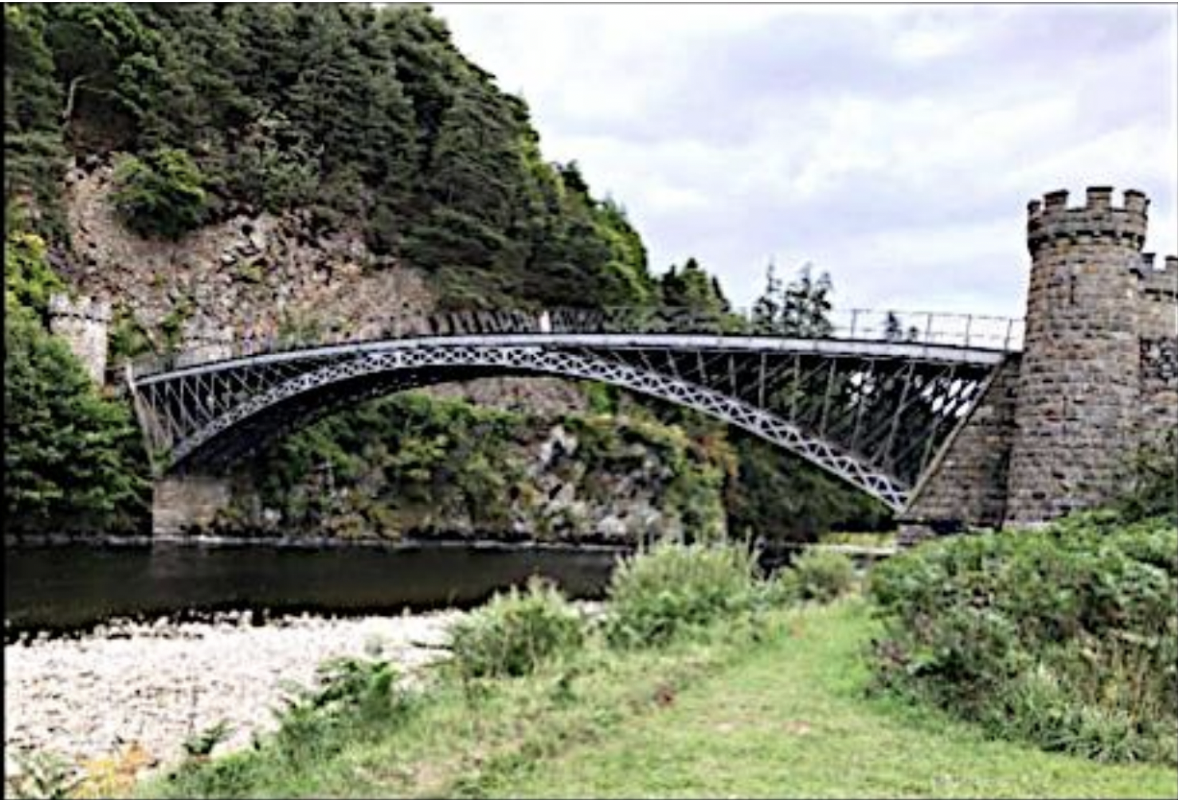
Menai Suspension Bridge
1826
Thomas Telford
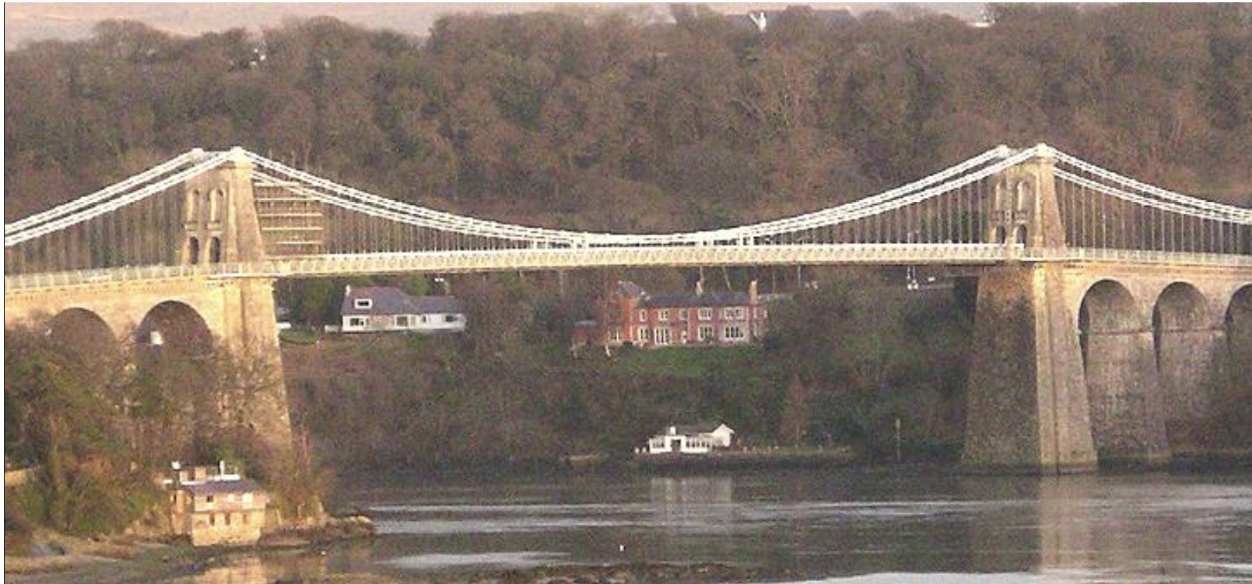
Caledonian Canal
1803 start - 1822 finish
Thomas Telford
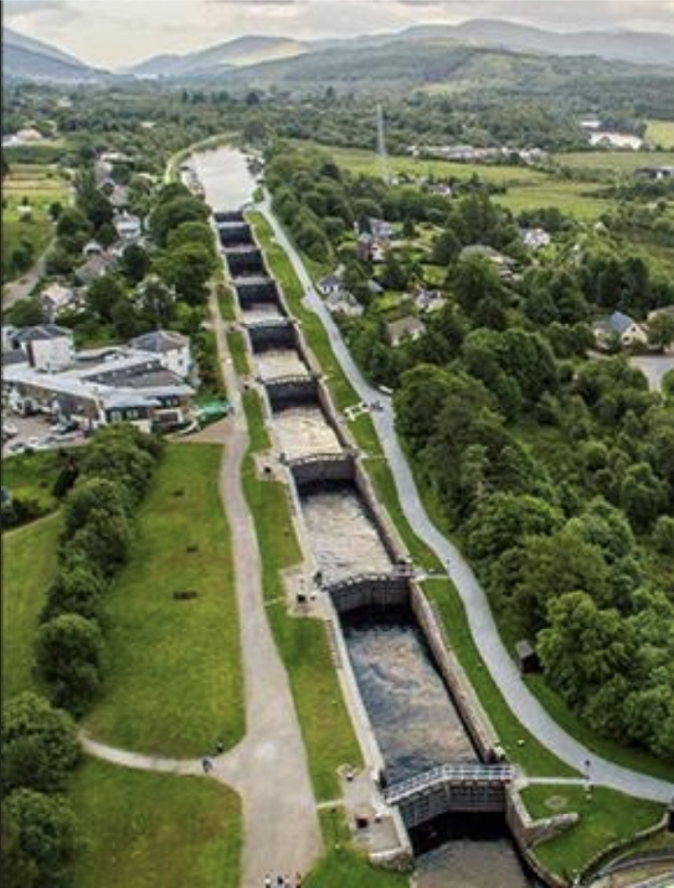
Separate Condenser
1769 (patent)
James Watt
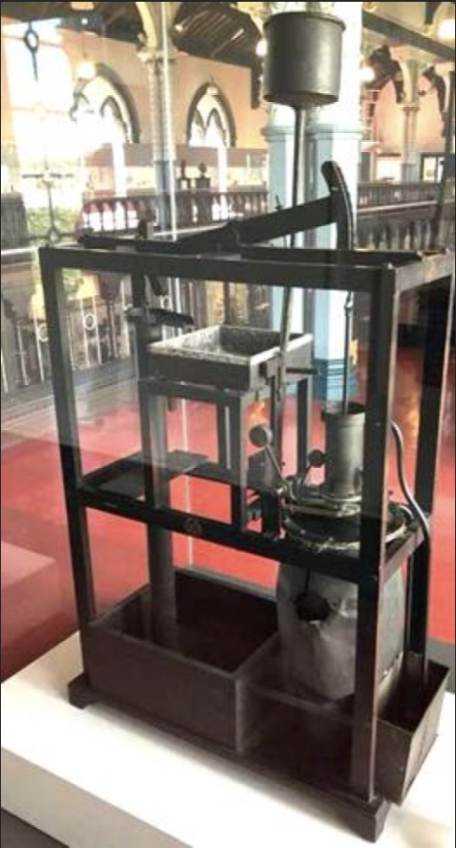
Watt first steam engine
1769 (patent)
James Watt
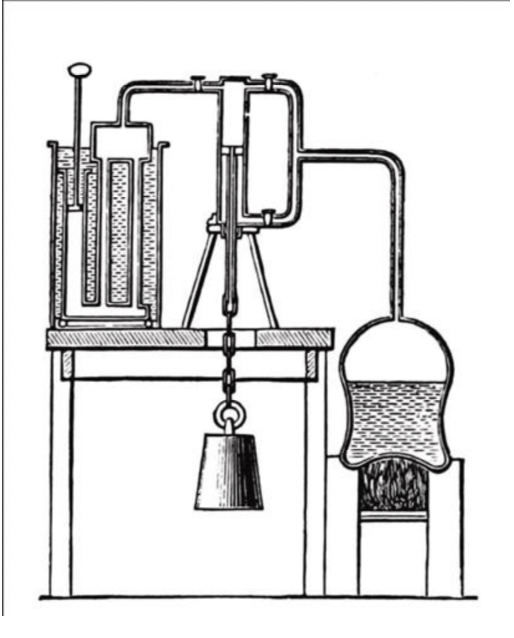
Mechanism Reciprocal to Rotary Power
James Watt/Mathew Boulton
1782
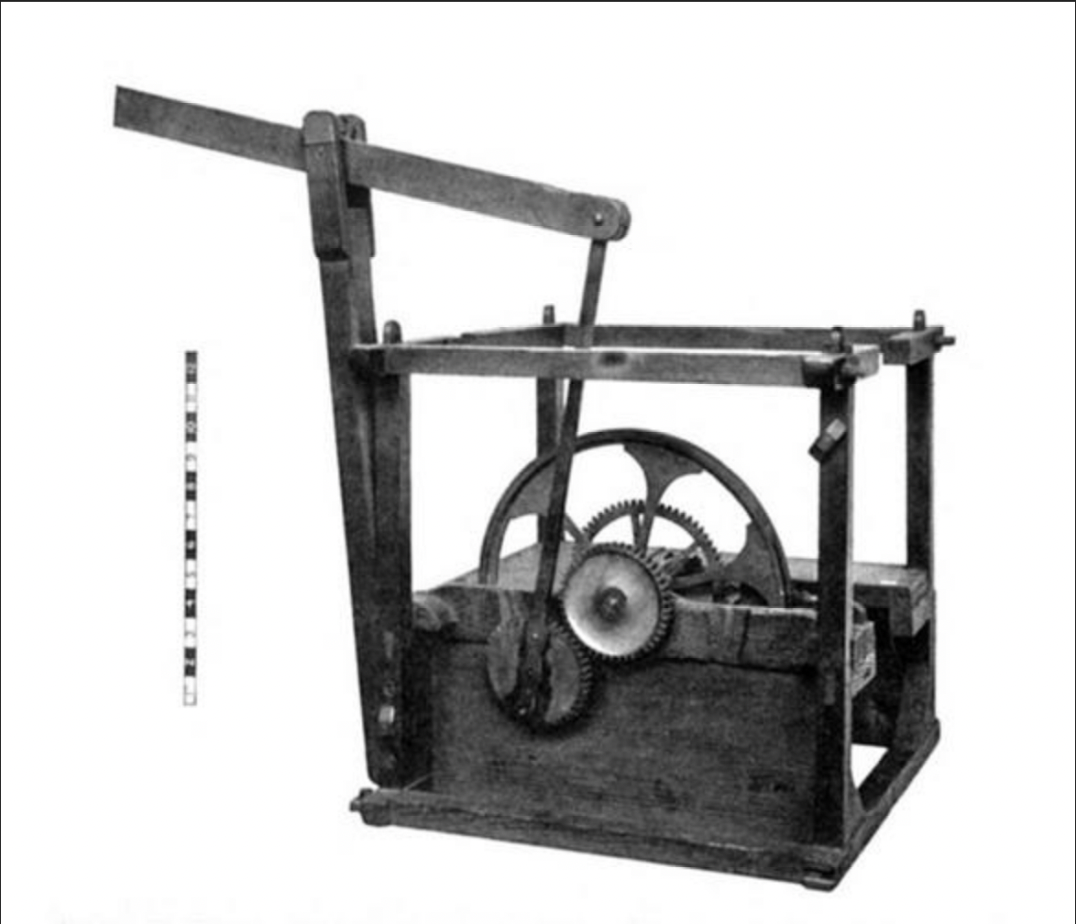
Indicator or Pressure Gauge
1794
James Watt
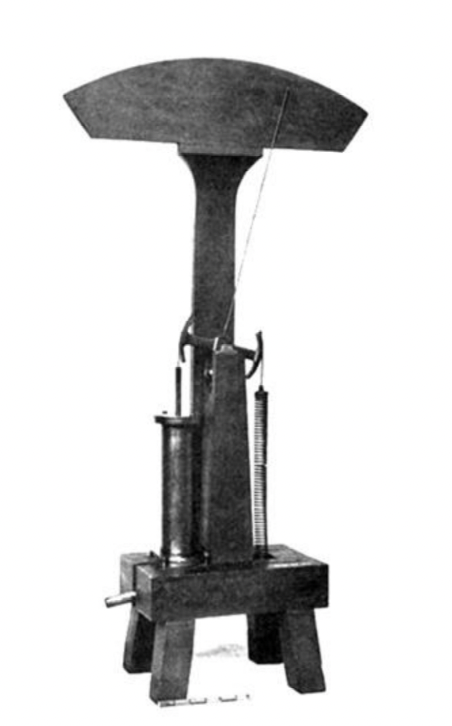
Newcomen Engine
Thomas Newcomen
1712
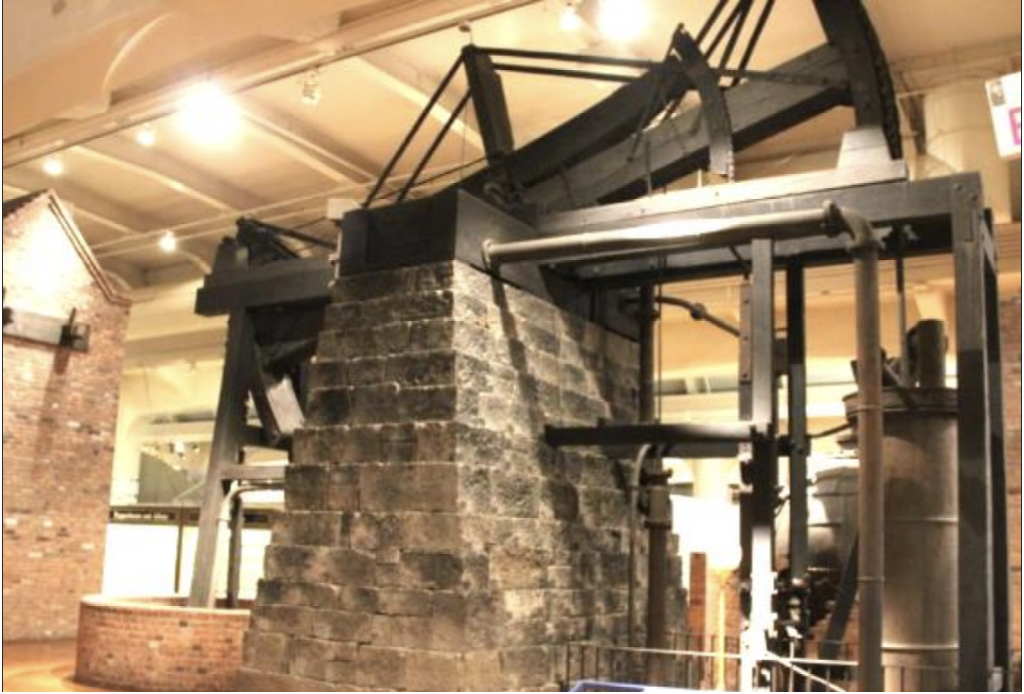
Double acting Rotary Watt Steam engine
1782
James Watt & Matthew Boulton
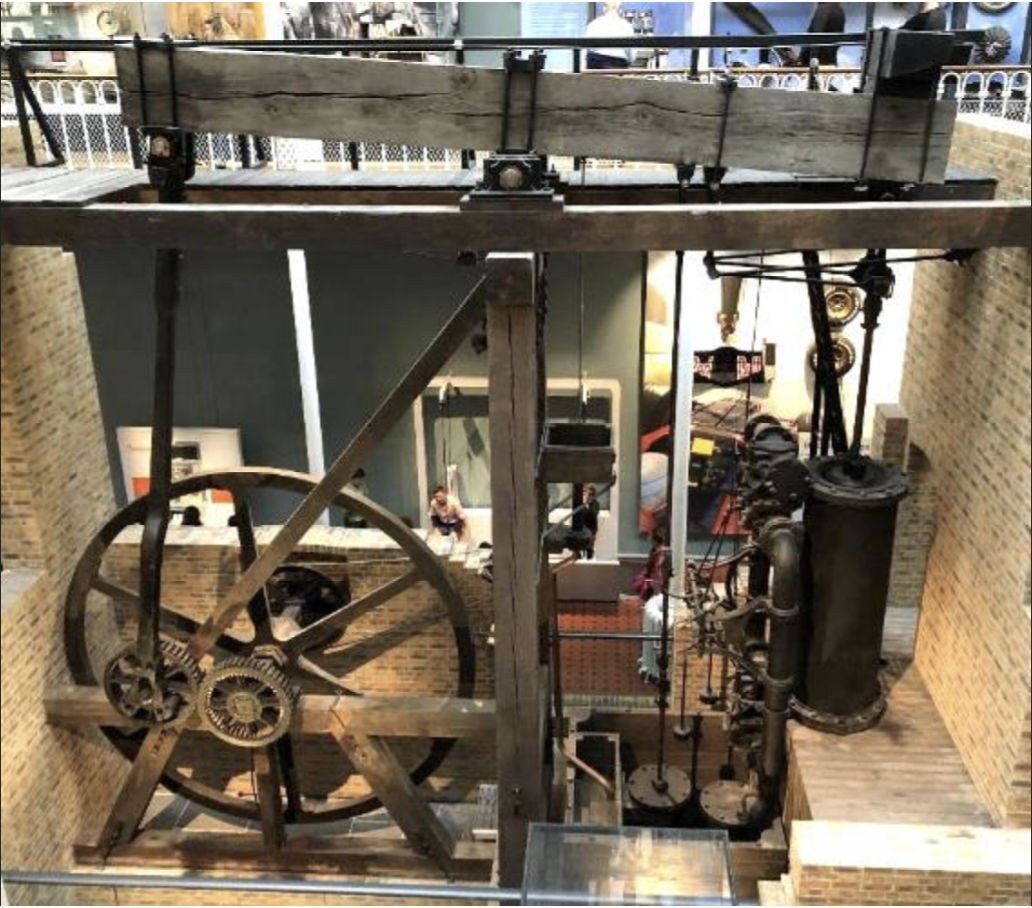
Steam locomotive (Steam piston, double acting with cross head, horizontal)
1829
George Stephenson
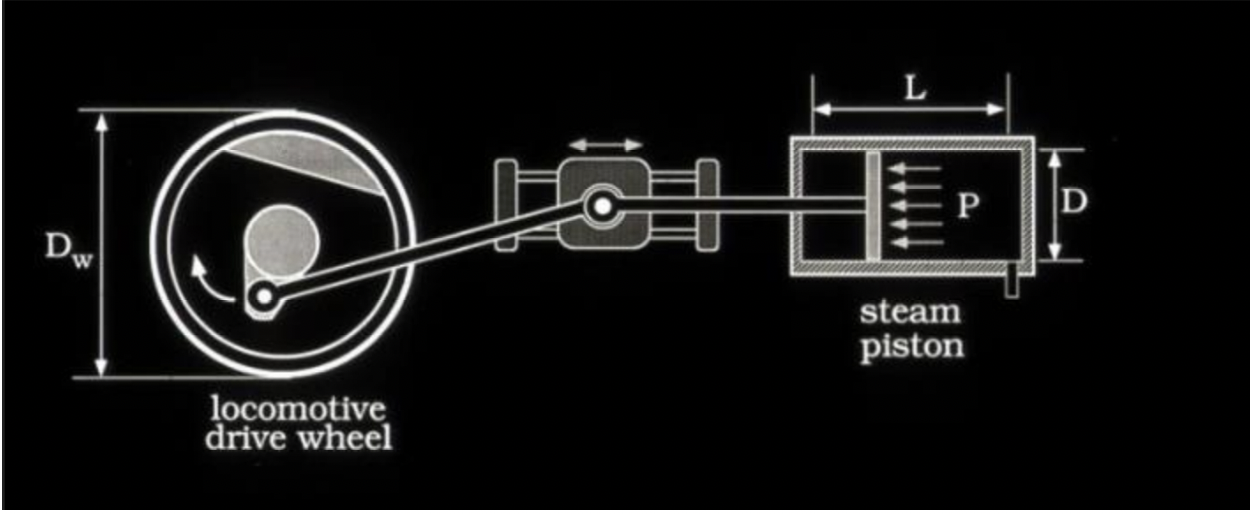
Steamboat ‘Enterprise’
1814, return trip 1815 (first trip on the Mississippi river)
Henry Miller Shreve (captain)
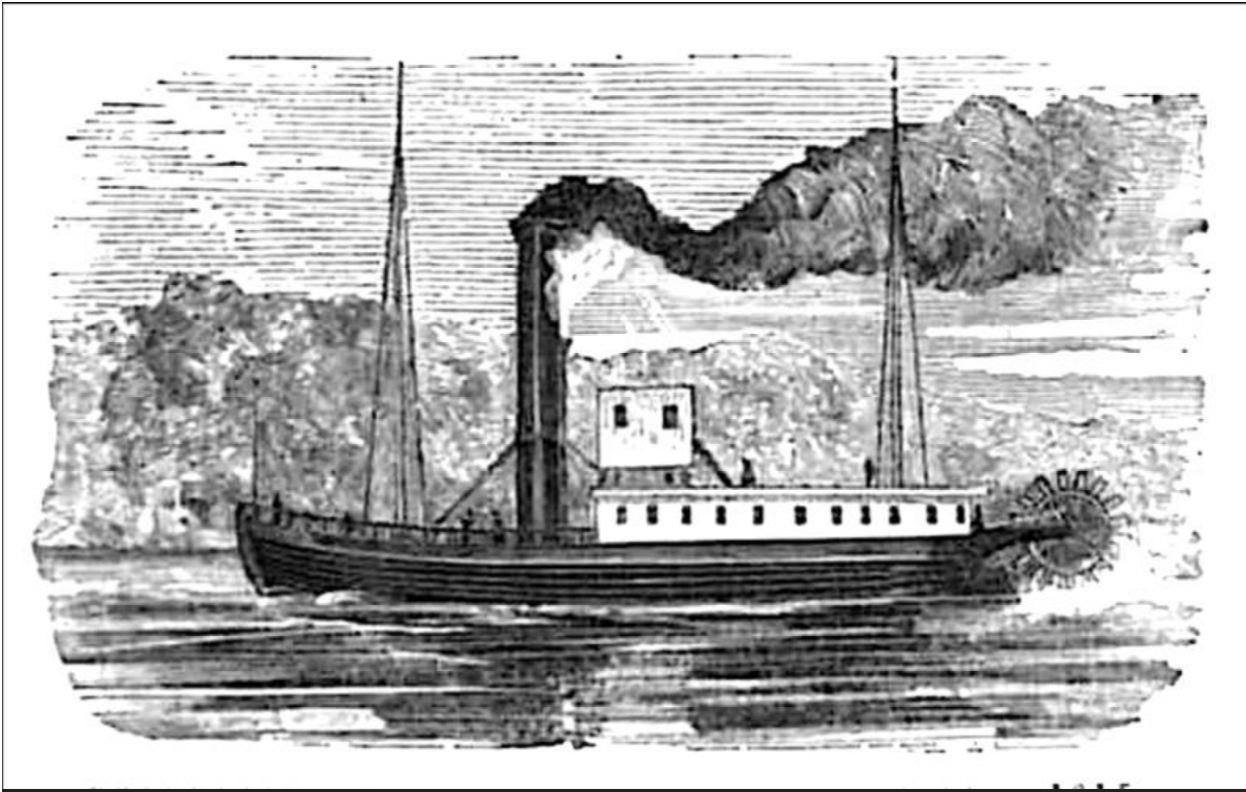
The Clermont (North River Steamboat)
1807
Robert Fulton
he used the engine that Watt and Button designed
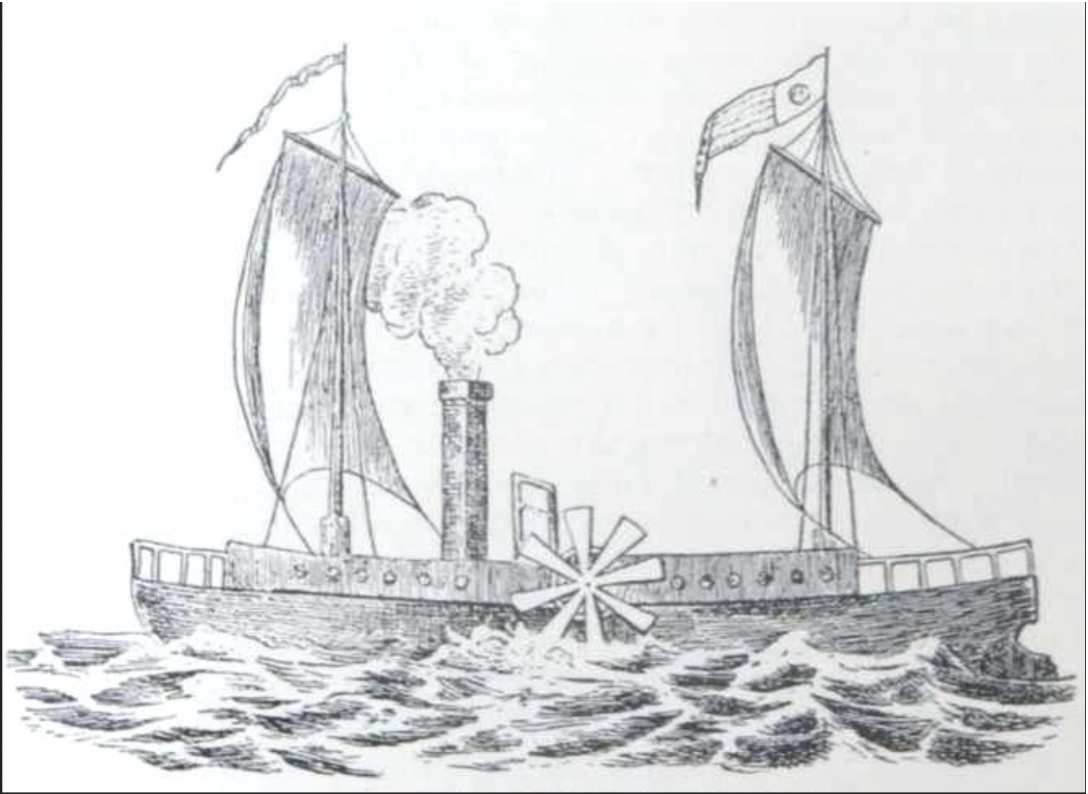
the efficient water motor/turbine
1848
James B. Francis
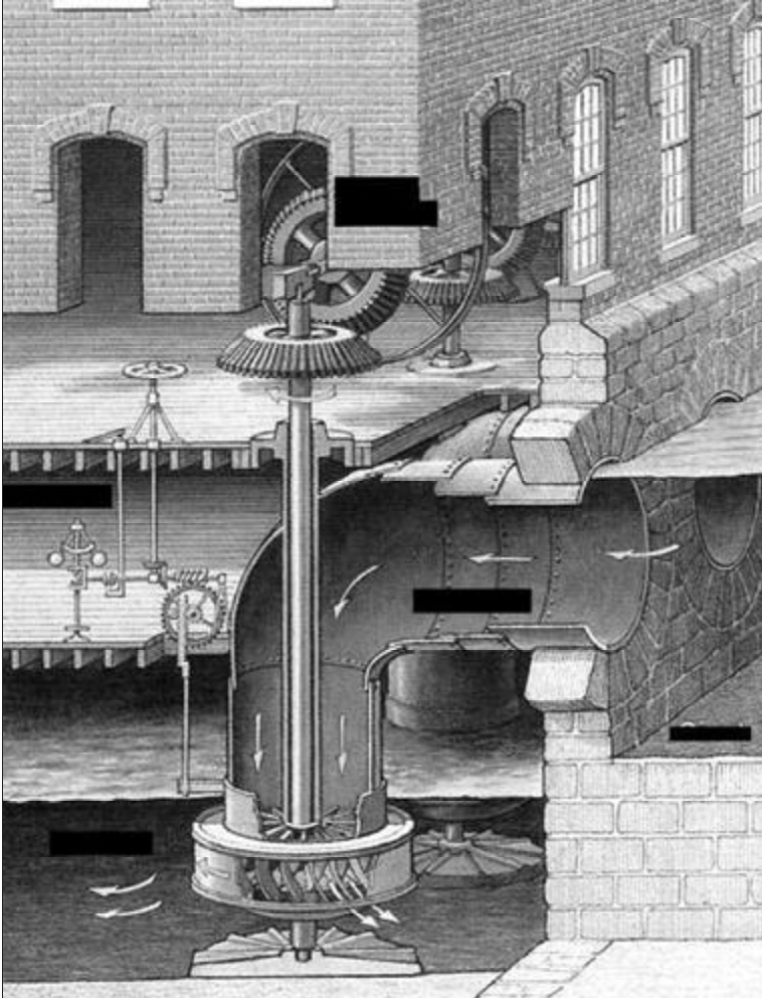
Hoover Dam / 1 of 19 Francis Turbines and Generators
1936 (1848 - Francis Turbine)
James. B Francis
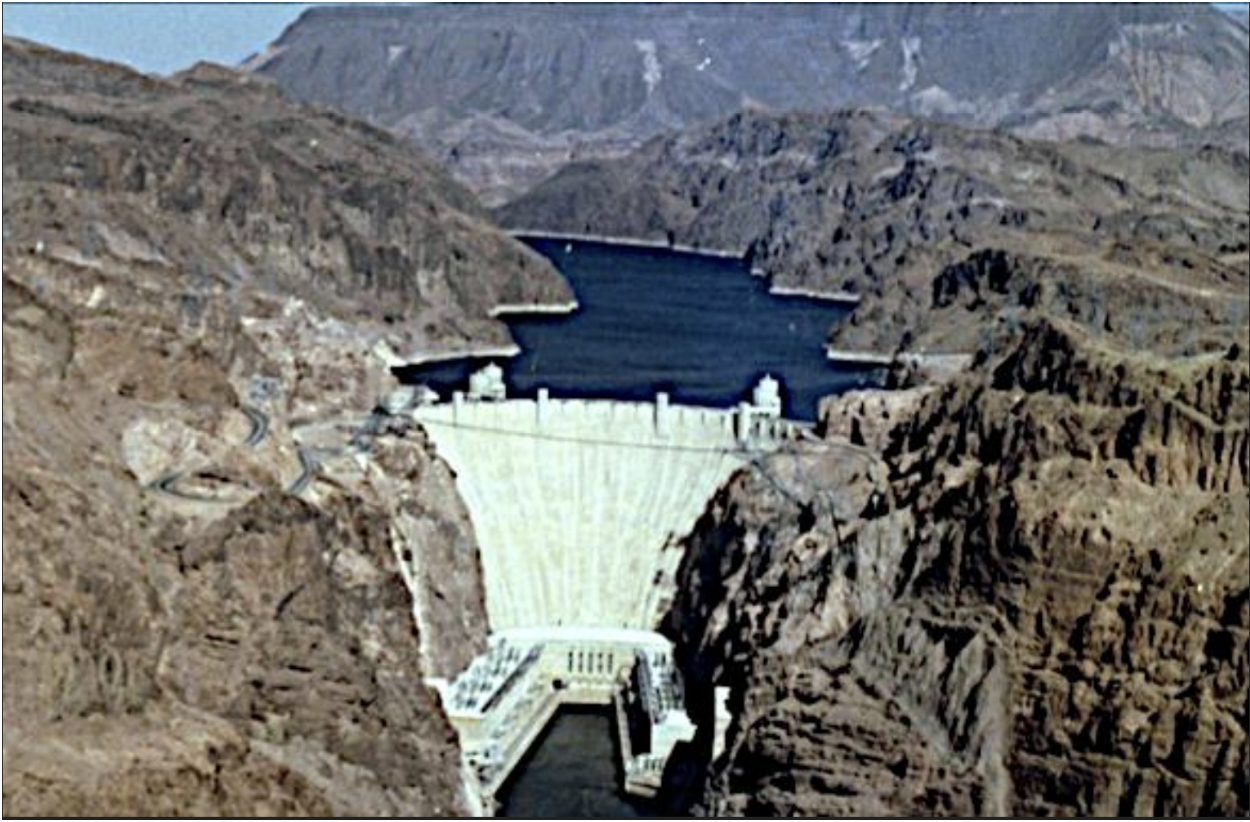
Francis Turbine (water Motor) used for spinning or electric power generation
1848
James Francis
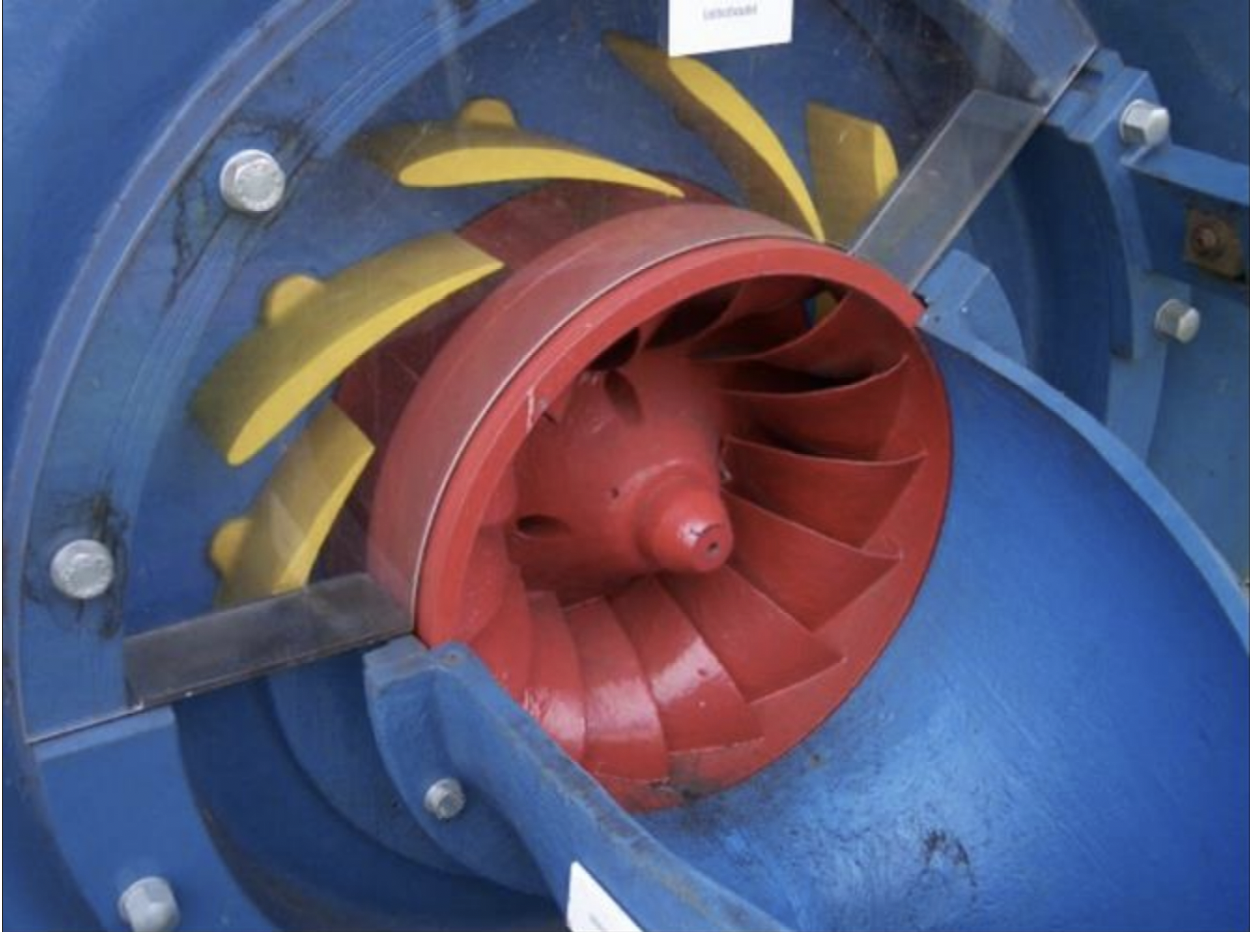
Prony Brake
Gaspard de Prony
1826 - inventor
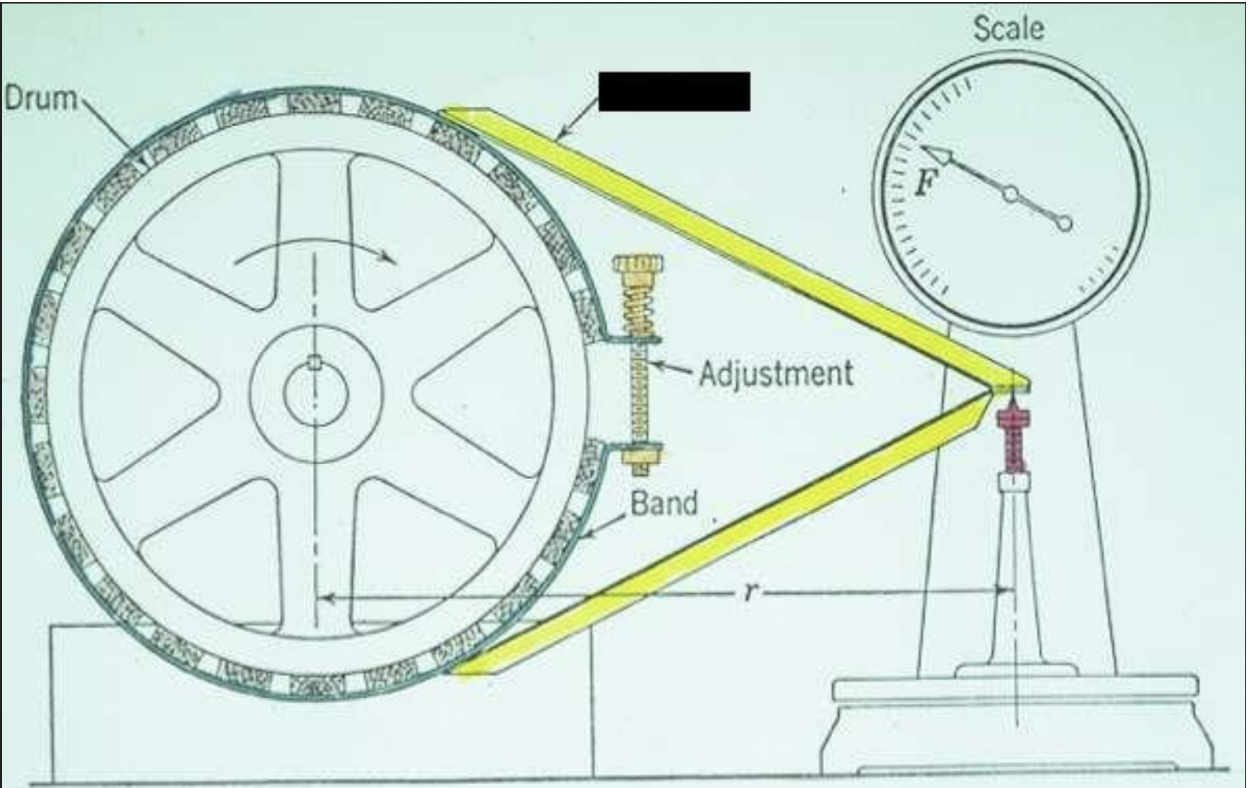
Electromagnet in circuit with copper-zinc batteries and on-off switch (First Horseshoe Electromagnet)
1825
Joseph Henry
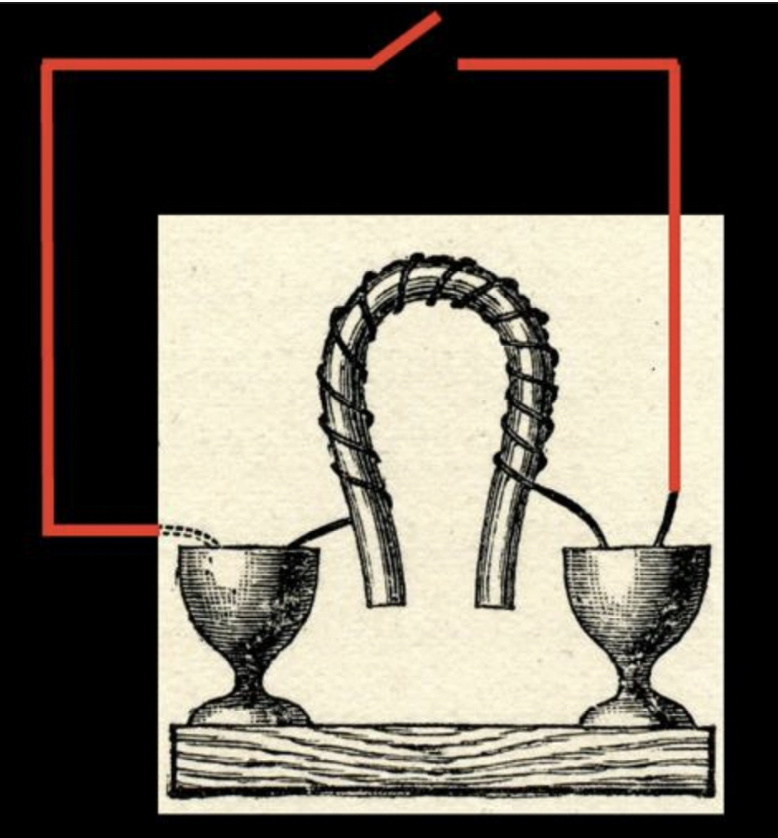
Stearns Duplex Idea (Telegraph)
1872
Joseph B. Stearns
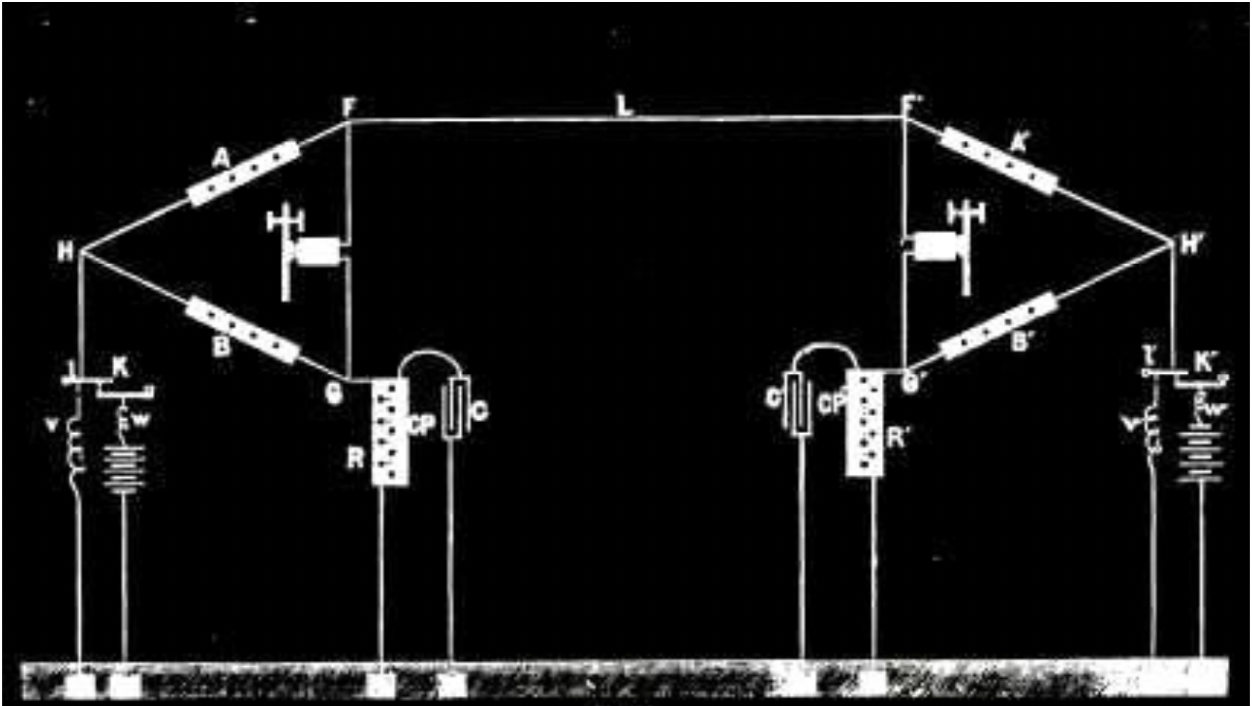
Merrimack Mill, building full of power looms connected to rotating shafts (Water Wheel)
Lowell Textile Mill Factory
1820s
Paul Moody created power loom
James Francis (Chief Engineer) Water Policeman
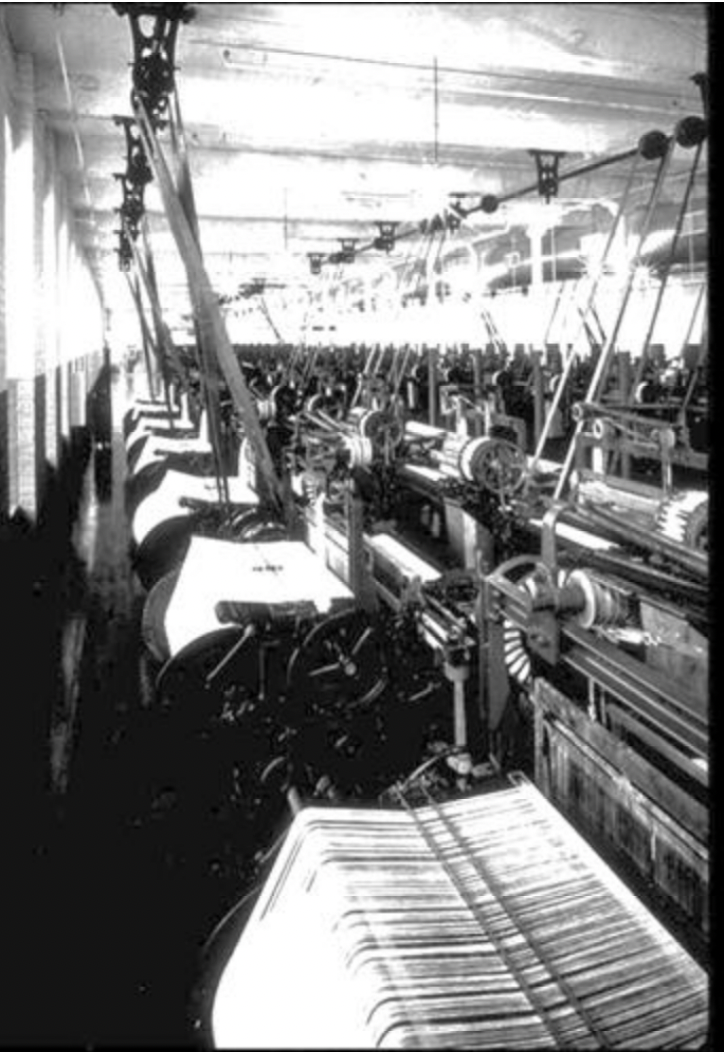
Sounding Telegraph (permanent magnet and horseshoe magnet) learned about turns of wire
1831
Joseph Henry
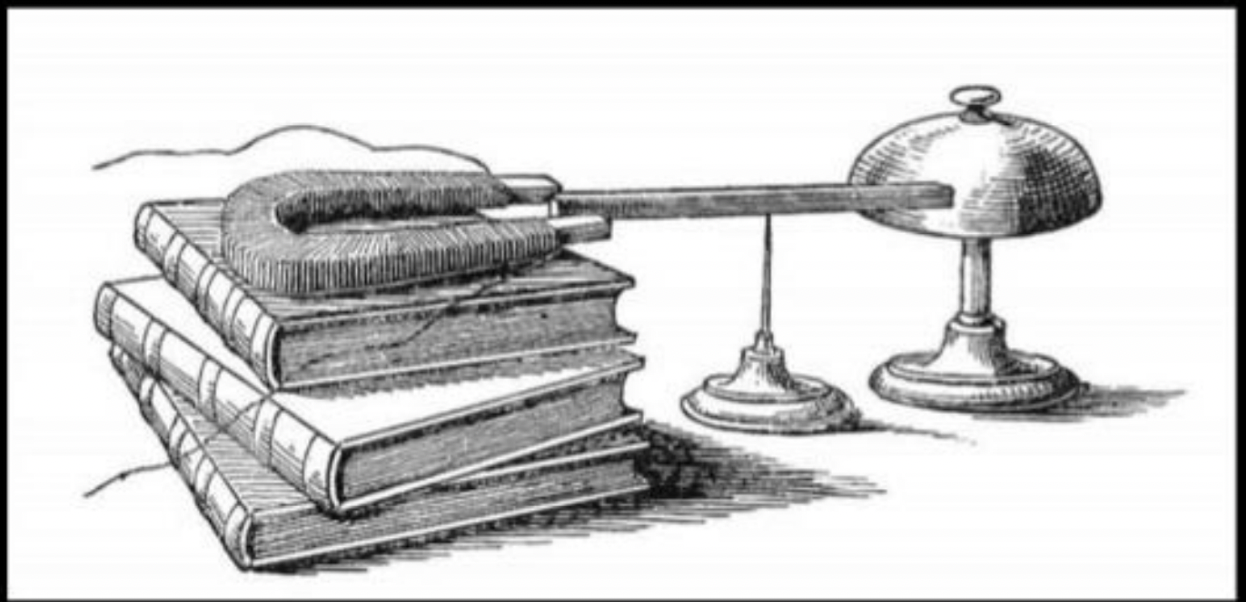
Henry’s Strong Electromagnet (750 lbs) goes to galvanic cell
1831
Joseph Henry
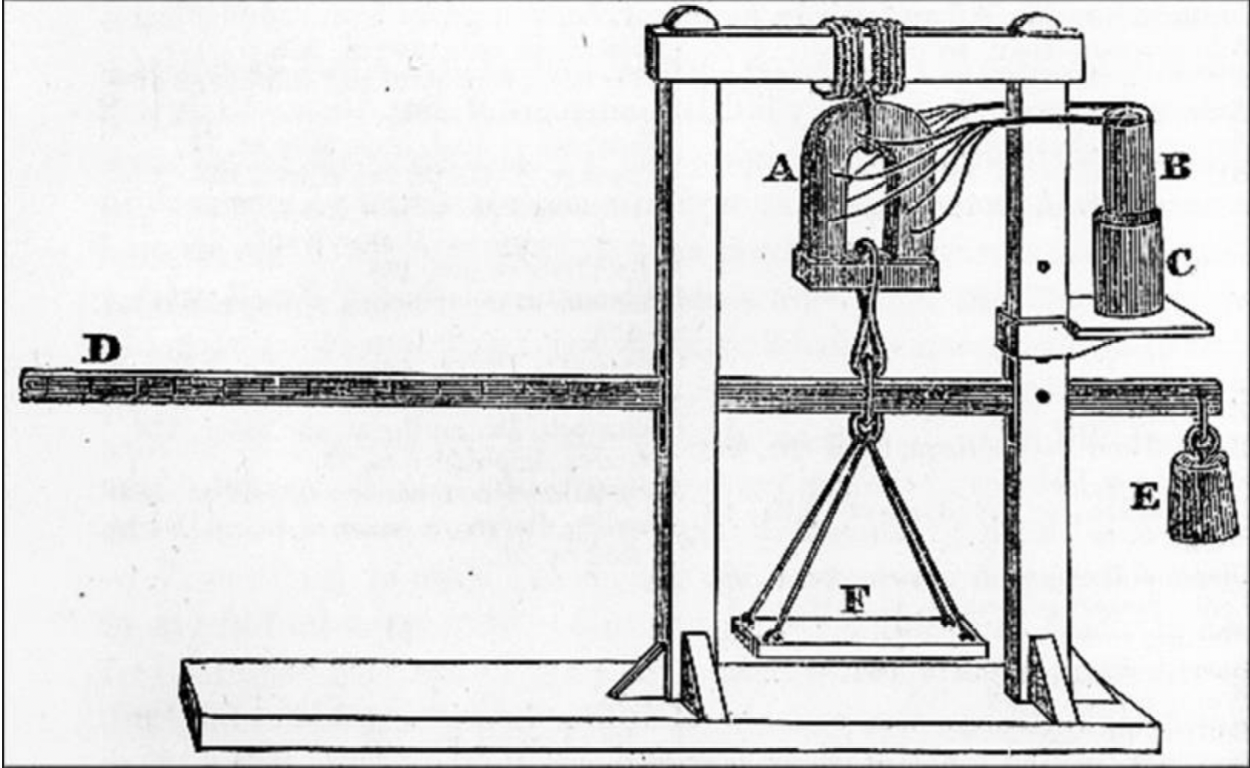
Water Wheel Driven Power Loom
1786
Edmund Cartwright
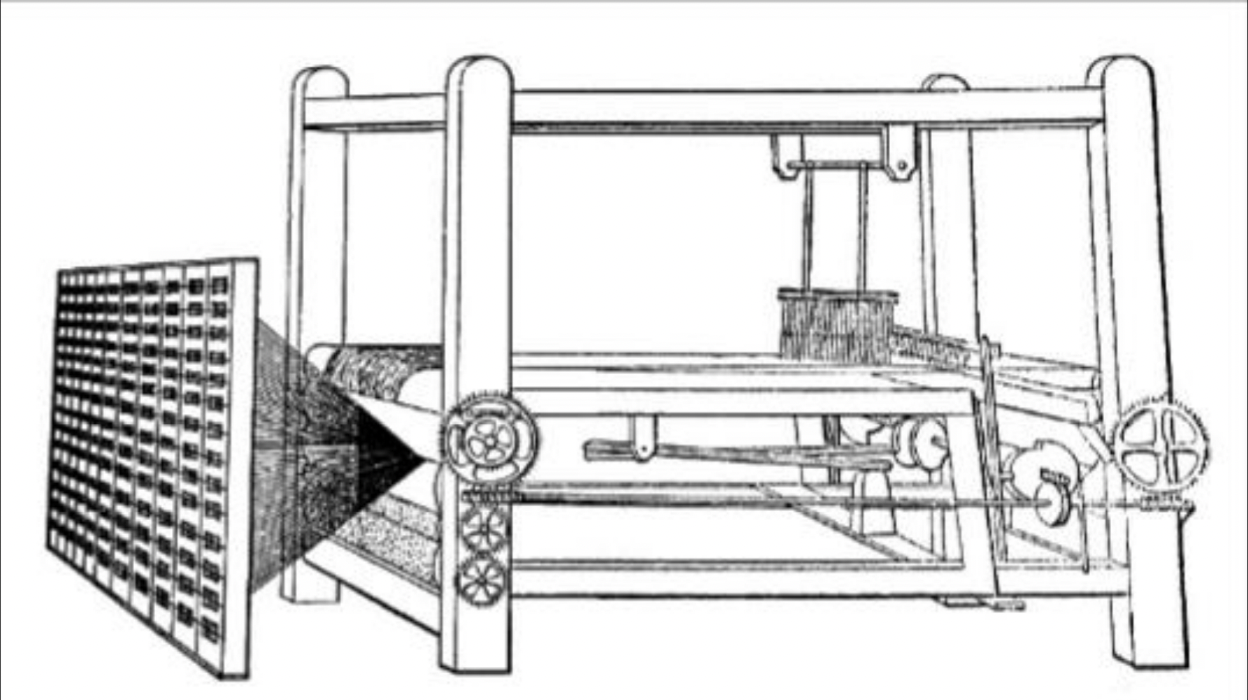
Blast Furnace for Smelting Iron
1709: Abraham Darby I
coke-fueled blast furnace enabled mass iron production
1828: James Beaumont Neilson
more efficient by pre-heating air
Thomas Telford first cast-iron arch bridges - 1814
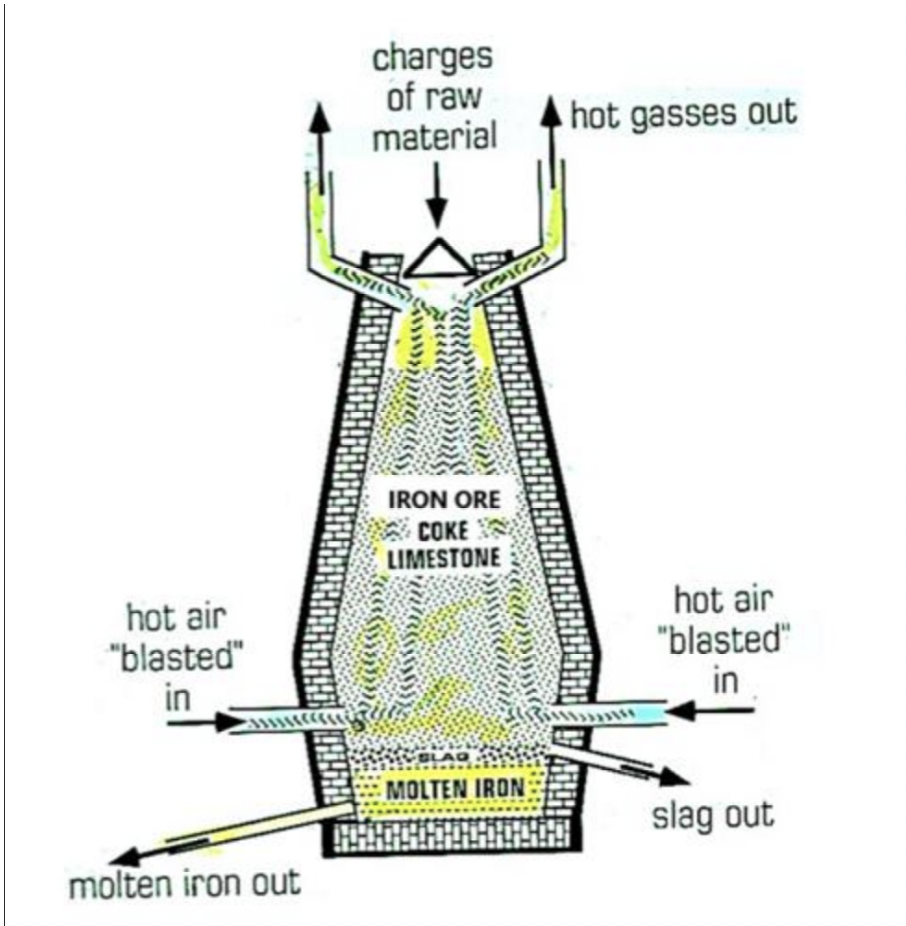
Corliss Centennial Engine
1876
George Henry Corliss
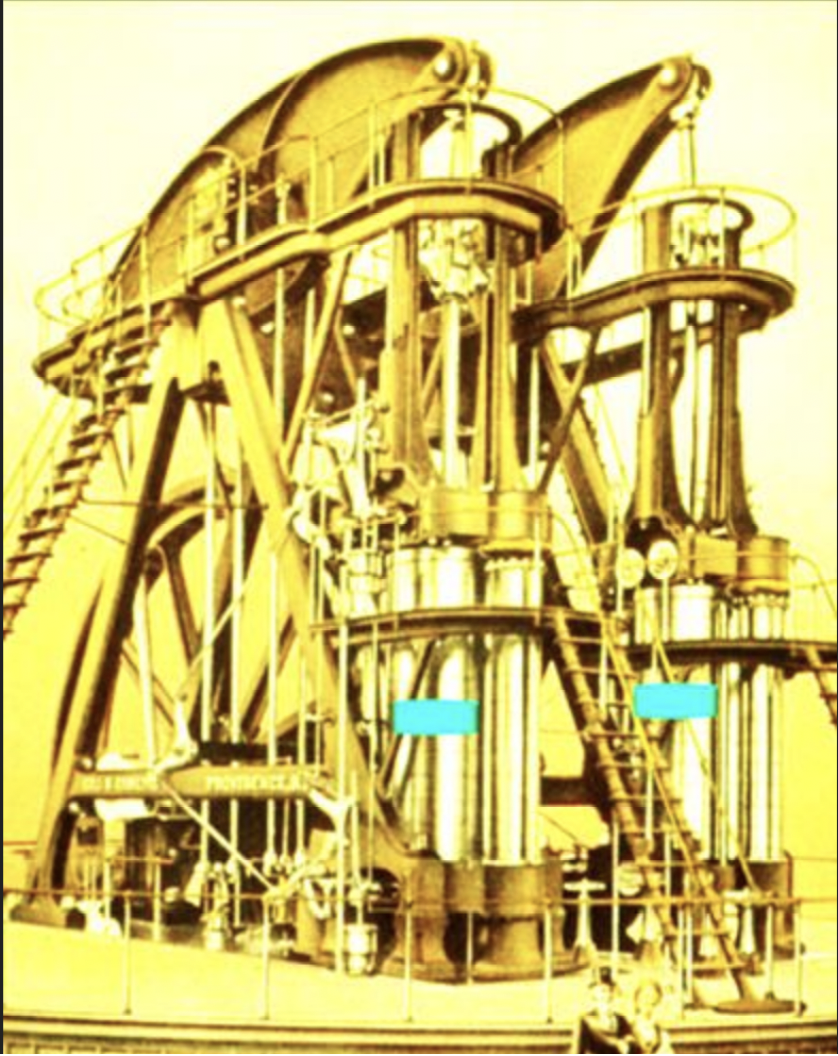
Electromagnetic telegraph
1844 (First message)
Samuel Morse
Gale and Vail help him
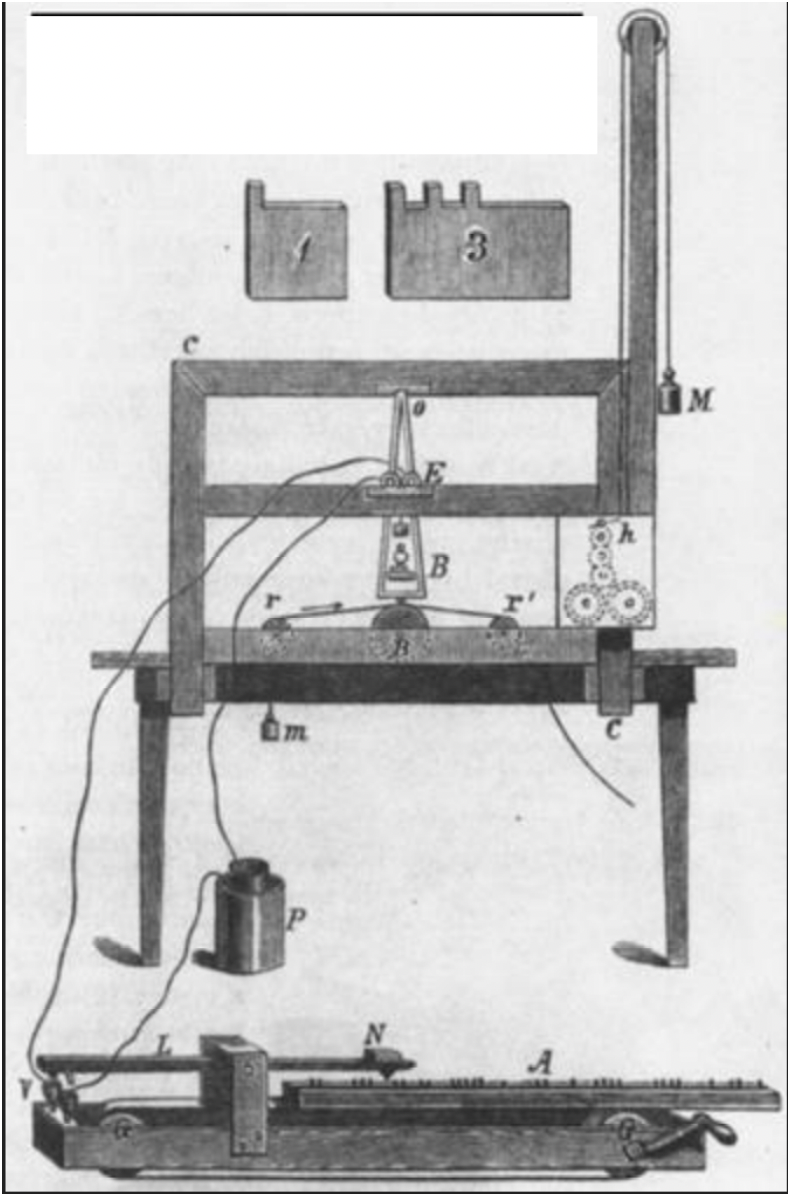
Binary Code Patent
1840
Henry Morse
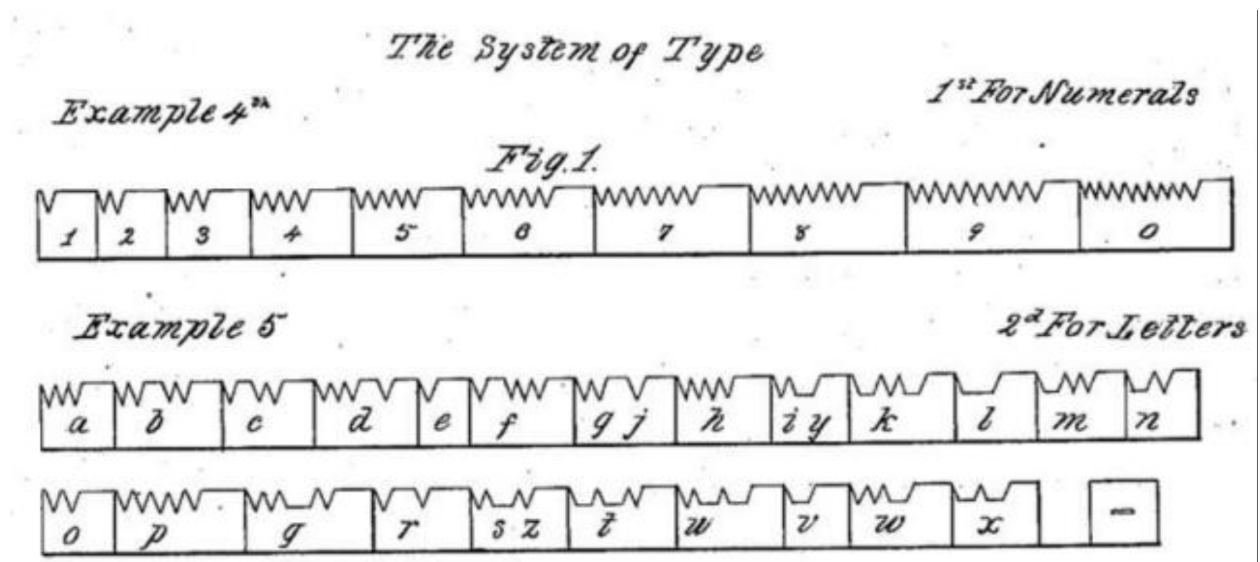
Old Killingworth Locomotive
1816
George Stephenson
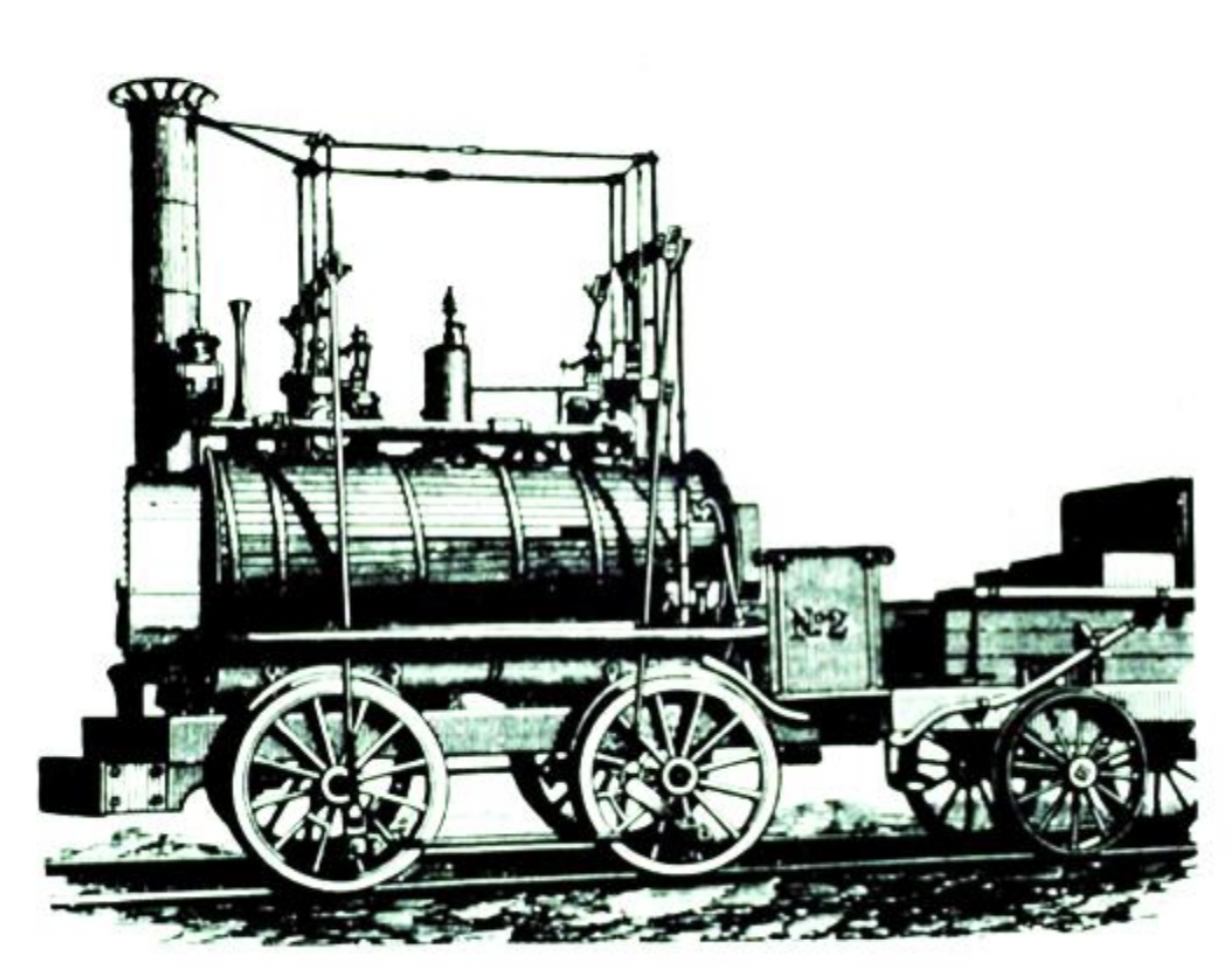
The Lancaster - Swivel truck - American-style locomotive (M.W. Baldwin)
1834
M.W. Baldwin
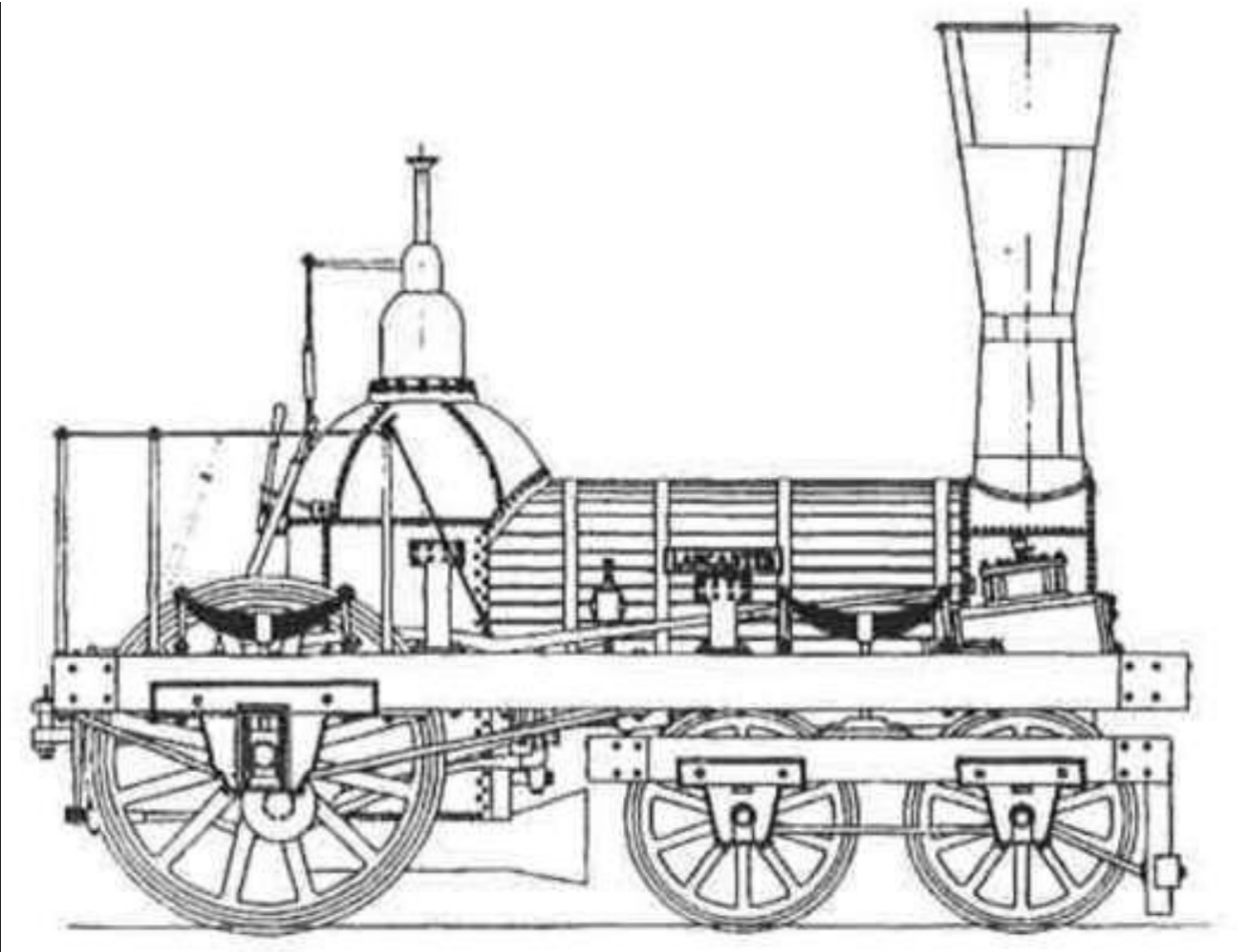
Consolidation
1866
Matthias Baldwin
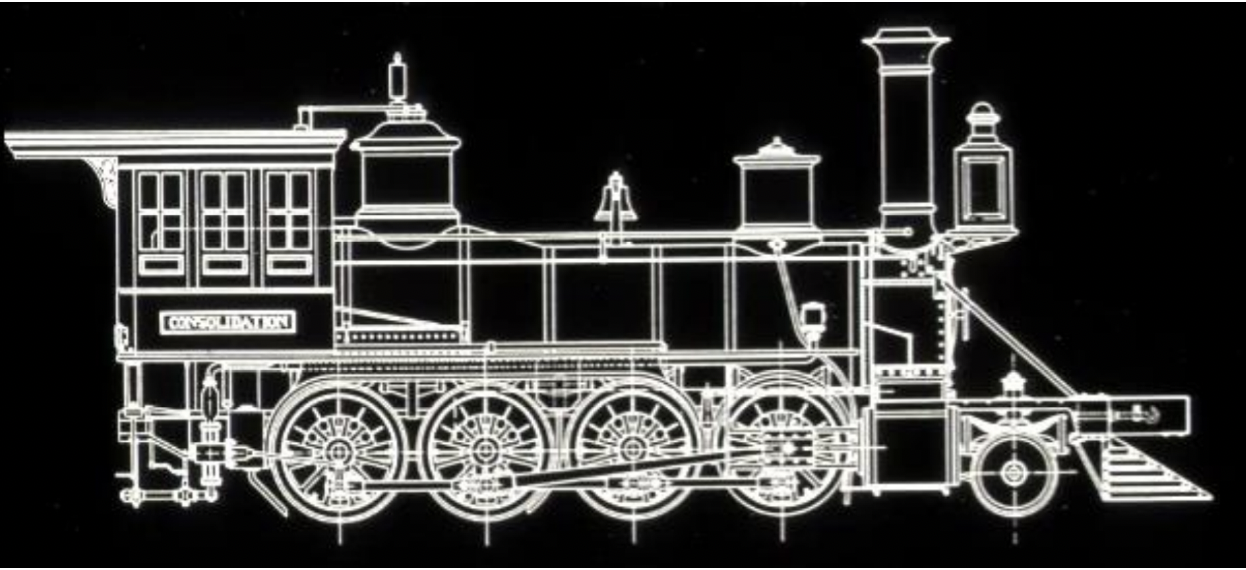
The Rocket
Robert Stephenson
1829
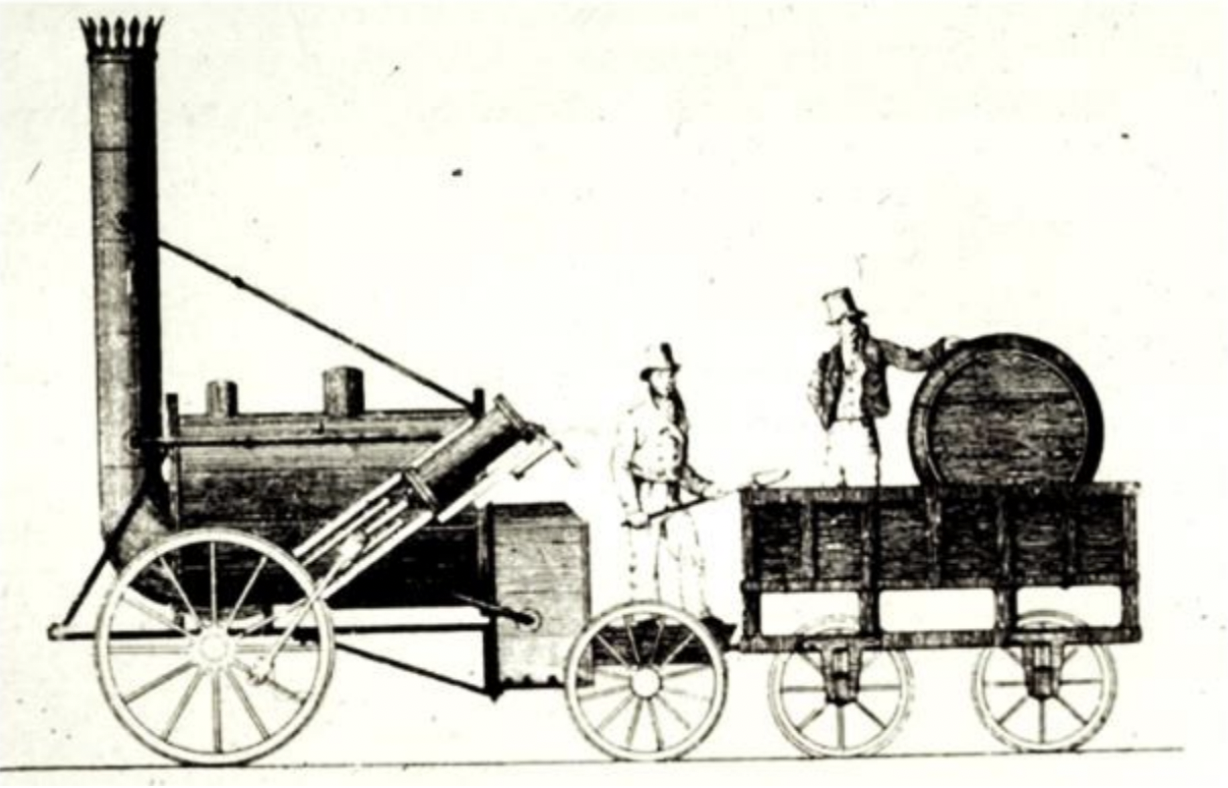
Clay-Lined Bessemer Converter (removes phosphorous)
1865 - Owned US rights to Bessemer's patent
Alexander Lyman Holley
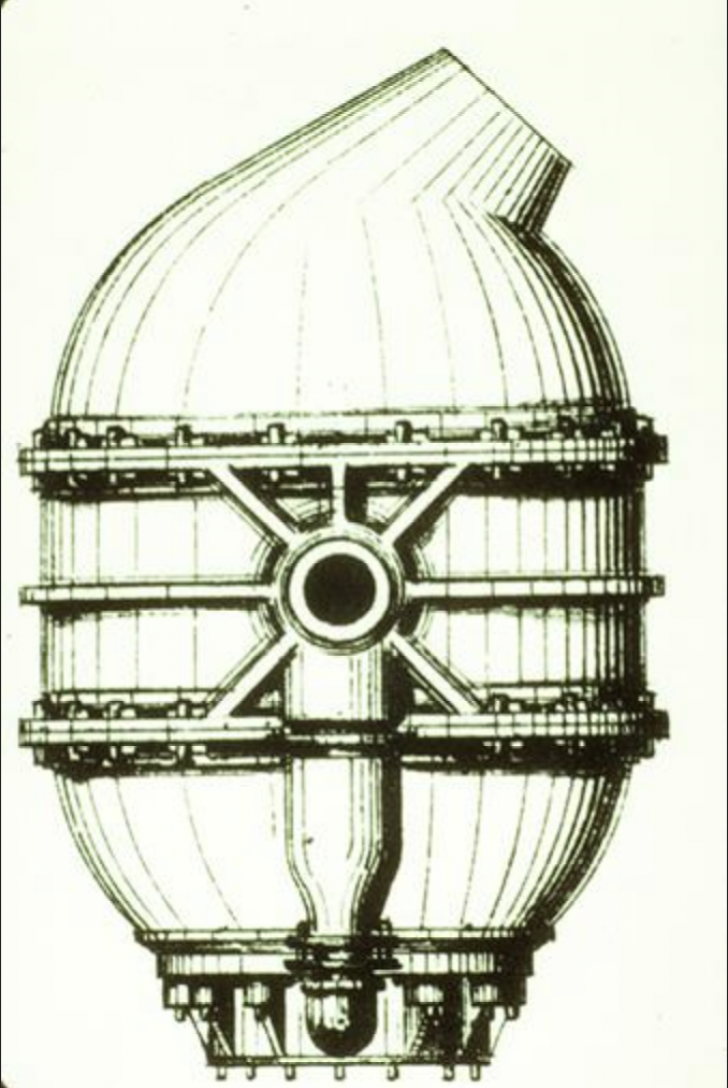
Steam Engine - Vacuum engine (suction, lifting water by fire)
Boiling water at the bottom of flask, steam has pushed all of the air out of flask (Flask = water + steam)
Turn off the heater and slide out of the way, start to cool, steam cools and pressure reduces, starts drawing liquid out of the bottom flask.
Creates a partial vacuum, cold liquid is drawn up, cooled the flask, process moves much more rapidly and water suddenly spurts all in once vacuum is broken
Almost a perfect vacuum, condense steam
32 feet you could pull water out of a mine
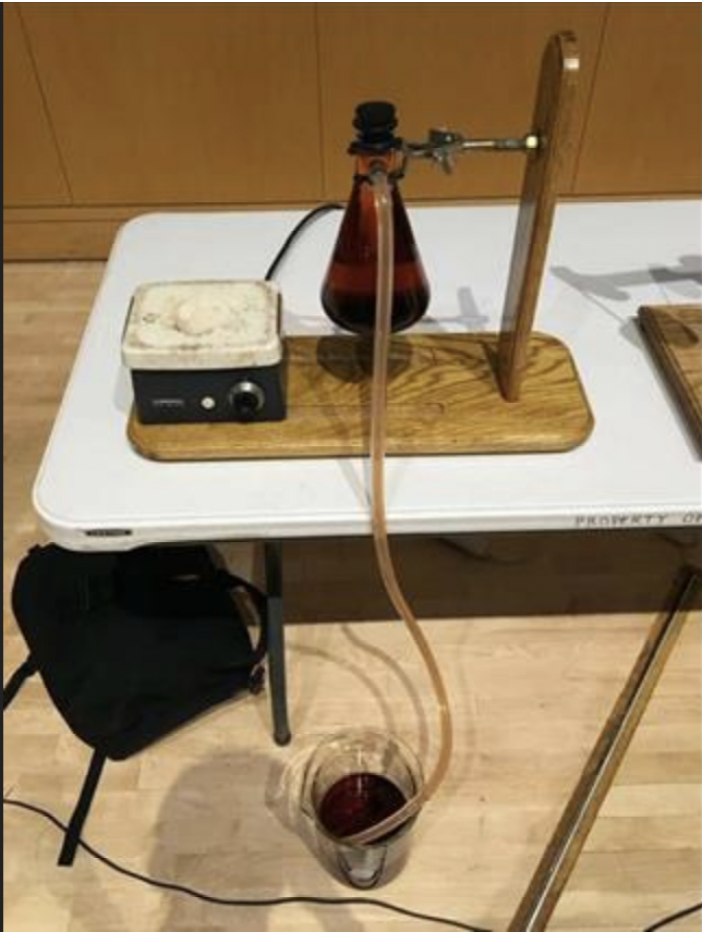
Prony Break (with Electric Motor)
measure the torque output of an engine by applying adjustable frictional resistance to a rotating shaft, absorbing and dissipating the engine's power as heat
Pull the sensors back, put tension on rope = torque load, measure tension in lower and upper rope
When spinning = tension is upper one is more than lower. Difference in tension = torque load
Spoked drum slides against progressively tightened bands. Friction causes the band and drum to heat up.
Torque vs. Speed is linear
Developed in 1821 by Gaspar Duproni as a device to measure the power of a motor. James Francis used it to calculate the power of his water motors.
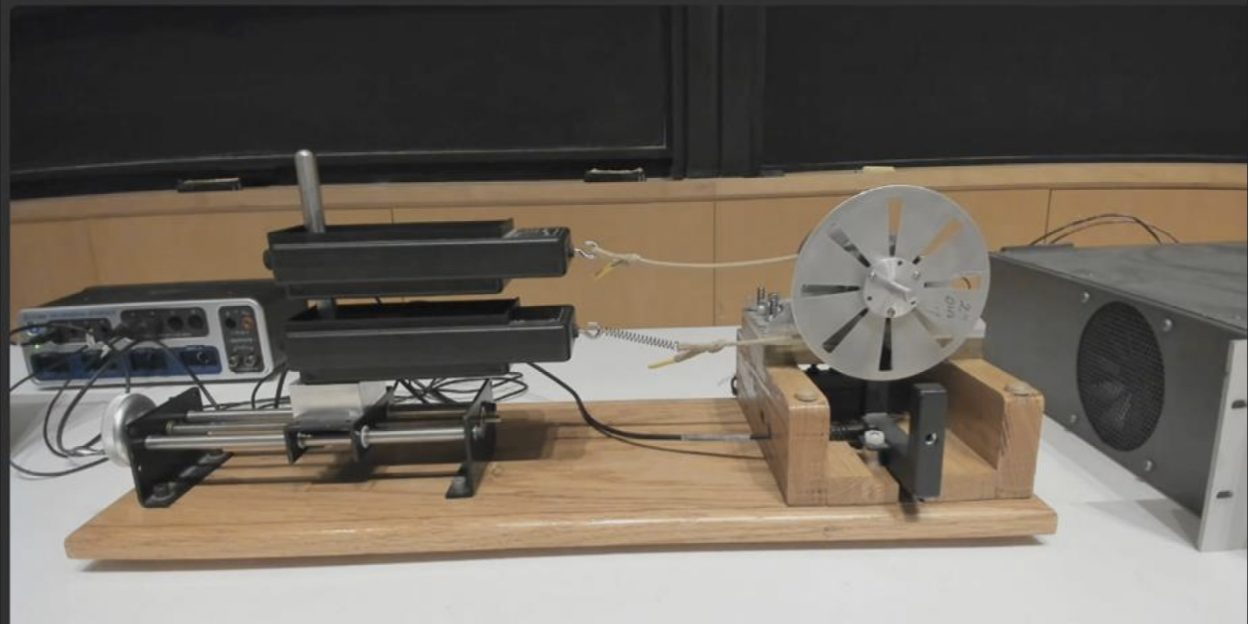
Traction Force needed to climb a hill
Force to climb a grade (Traction force(T) = rise/run * weight of locomotive) (Power to climb grade = TV/33,000)
Measure locomotive and cars
Measure the rise degree needed to be a quarter of the train weight
Balance maximum traction available and traction needed to climb
If increase weight of locomotive, greater the traction force that you have
Find maximum angle before wheels start slipping
If you add more weight, not able to handle incline
Demonstrate maximum traction.
Demonstrate challenge of large grade when towing a large load.
Demonstrate fix by increasing the weight of the locomotive.
Conclusion
Heavy and powerful locomotives
Low grades (2% is standard)
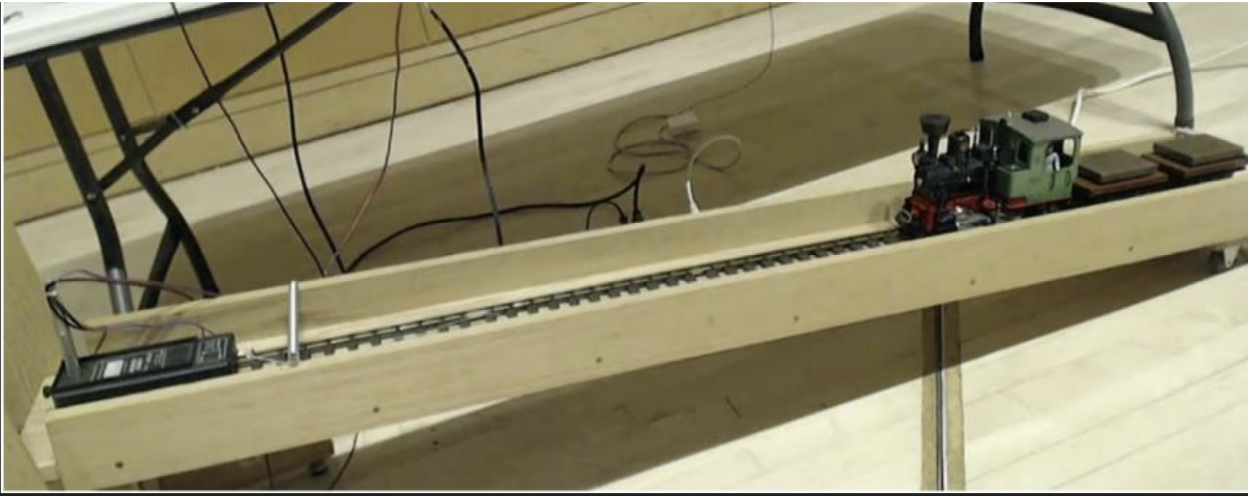
ARCH versus CABLE Demonstration
Cable = tension, Arch = compression (opposites)
Catenary chain hanging from bottom (hyperbolic cosine)
While a chain is hanging, flip it over you form a catenary arch
17 blocks with the same shape as the chain
Purely gravity load (no bending force)
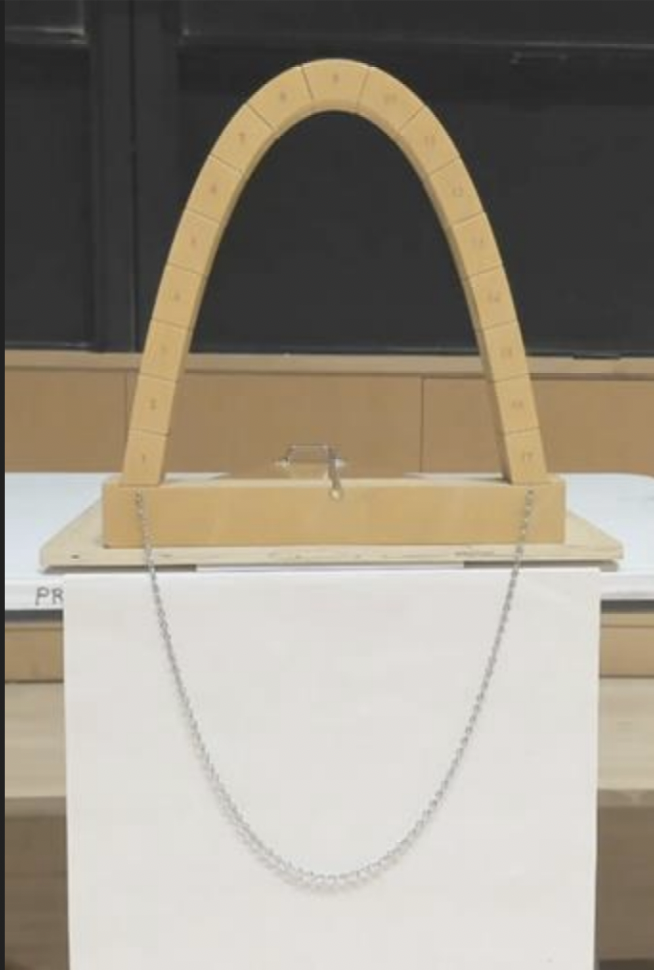
T = 0.97 V^2 Cd A, T is tow-line tension (lbs), V is the boat speed (ft/sec), Cd is the drag coefficient, A is the wetted area (sq-ft)
Boat in a channel full of water. Weight on an upper and lower pulley
Weight falls as you let the boat go. Initially the boat will start to accelerate and then it will reach a steady state
Measure tension in string and steady state speed → data point on relationship between force and velocity
When drag force balances the weight = steady velocity
The graph shows velocity as a function of time. Velocity is increasing linearly in time and then settles
From that you get the drag coefficient
What Beaufout did in 1800 → Used by Foulton in designing his boat
